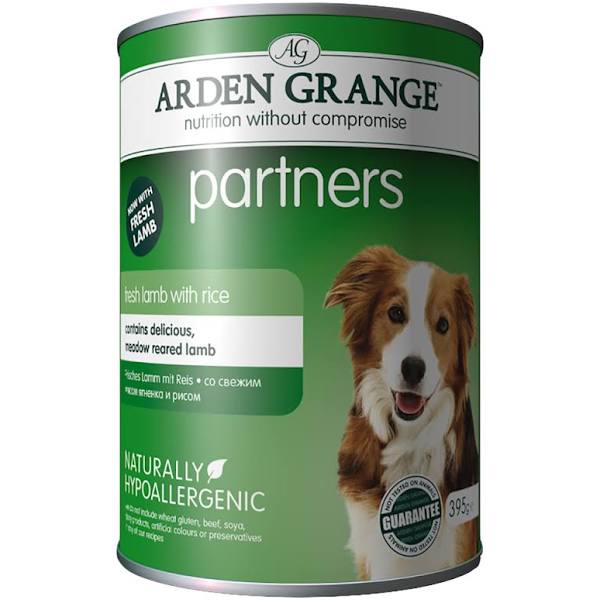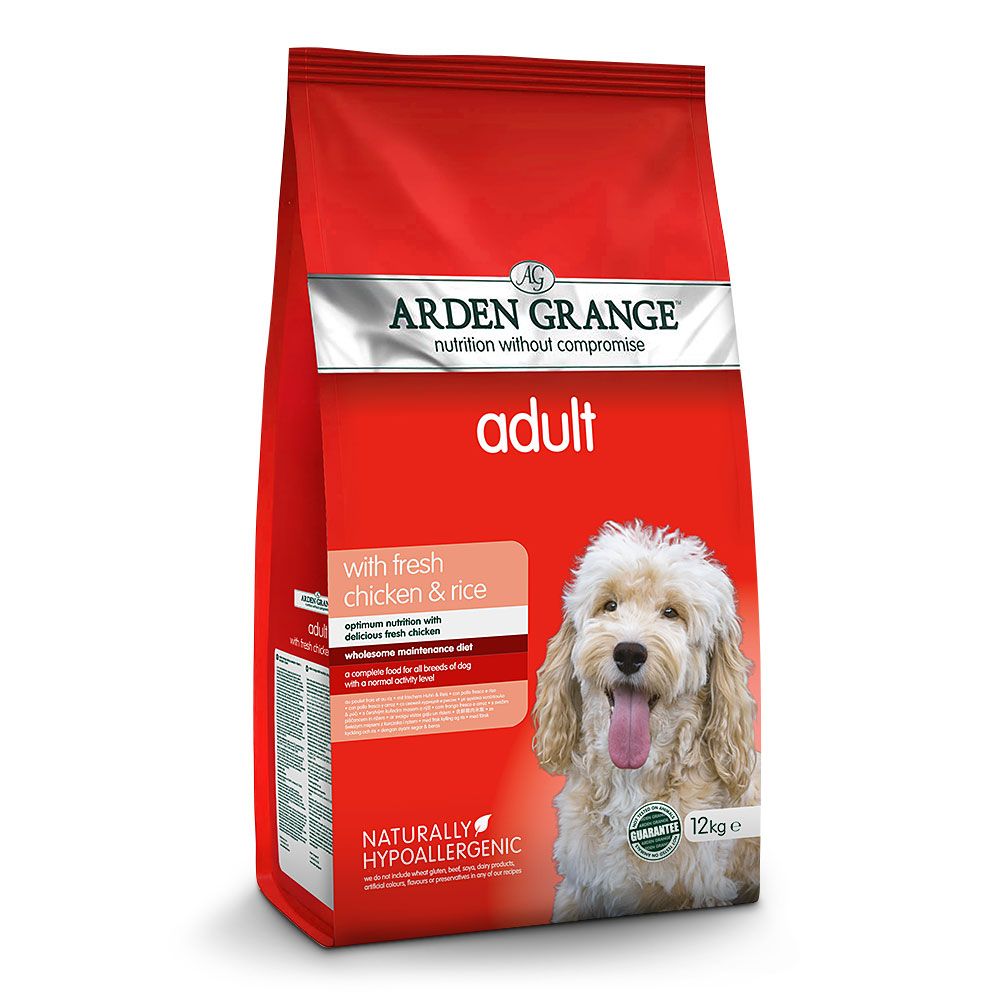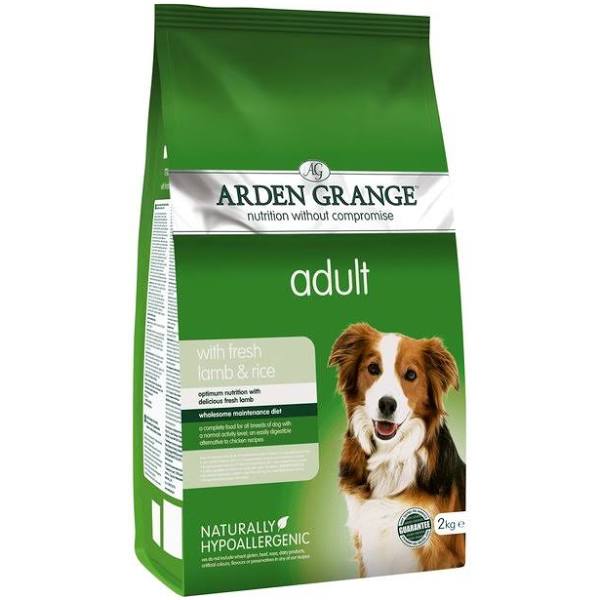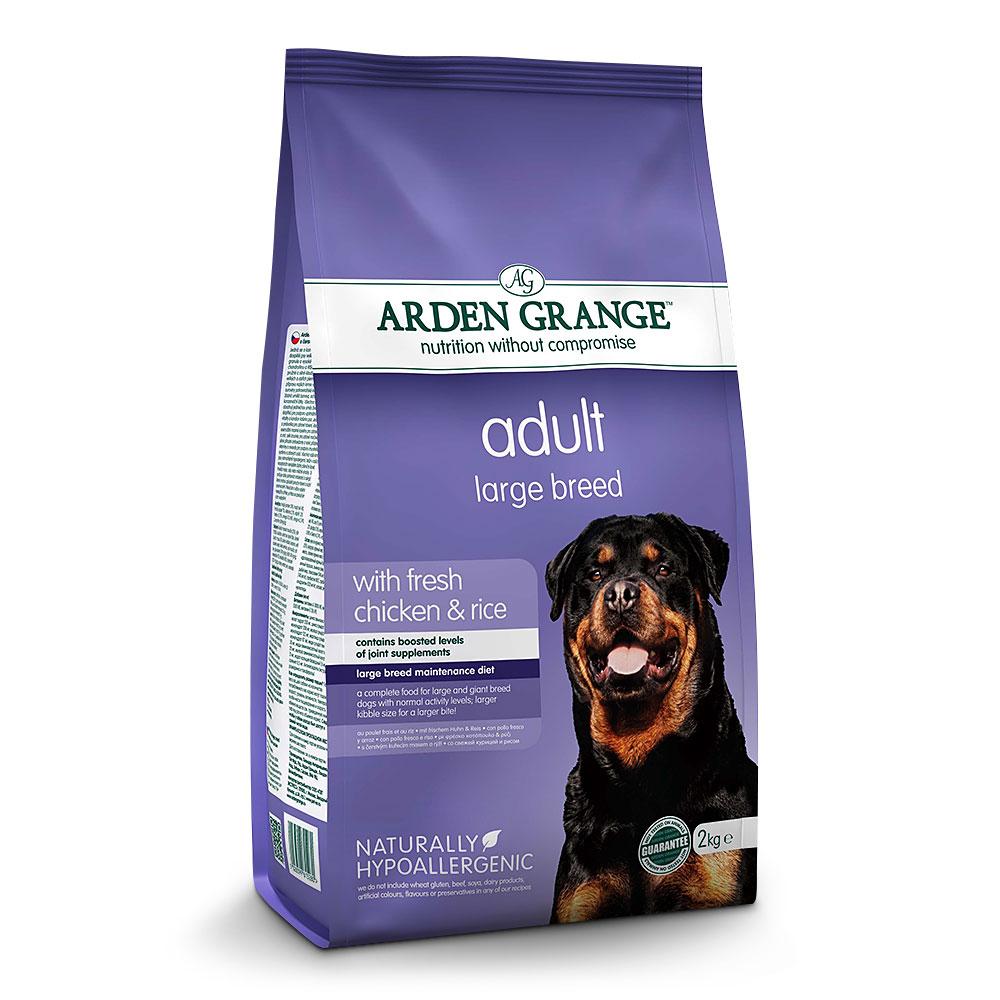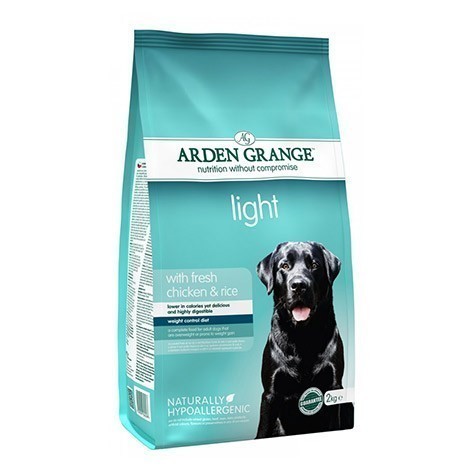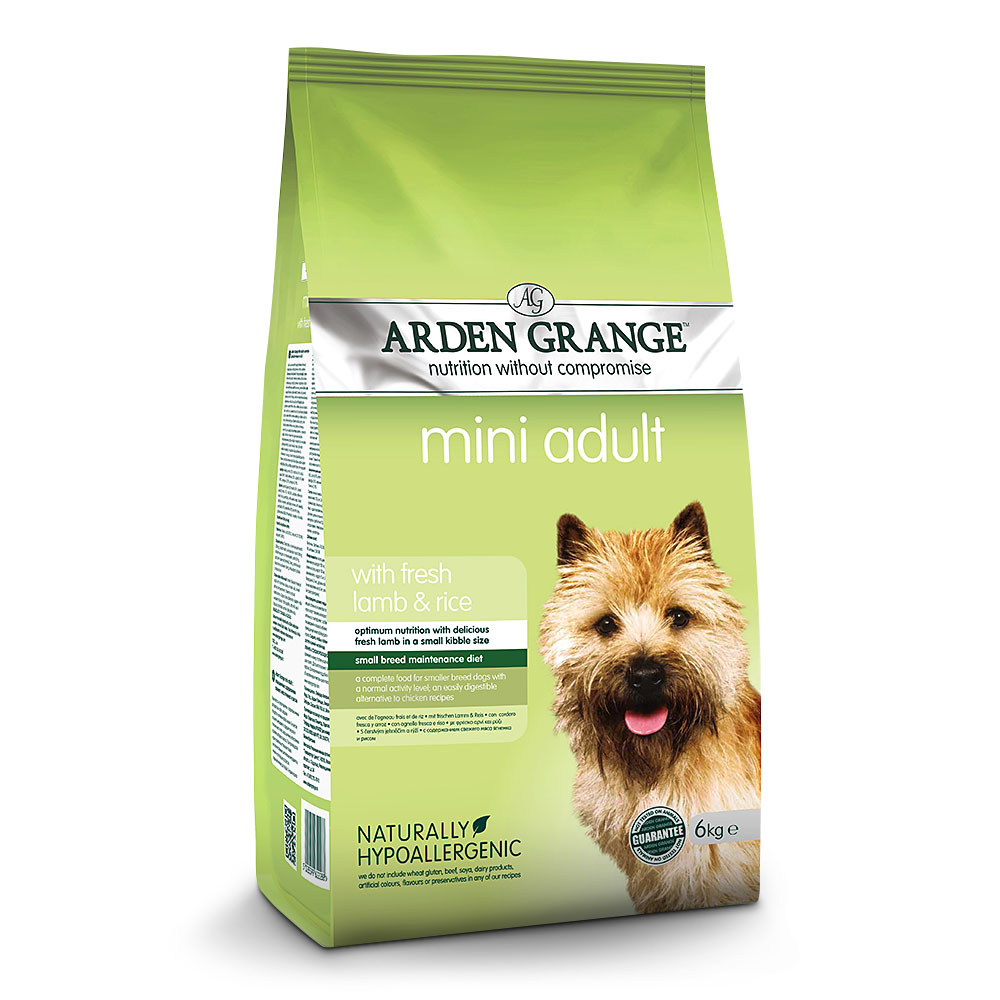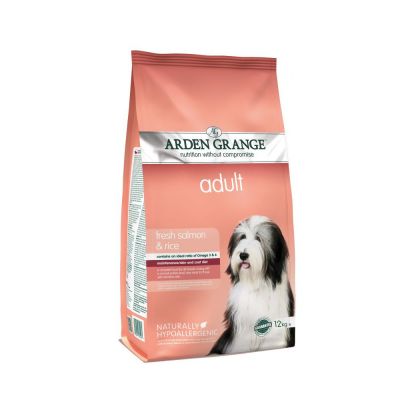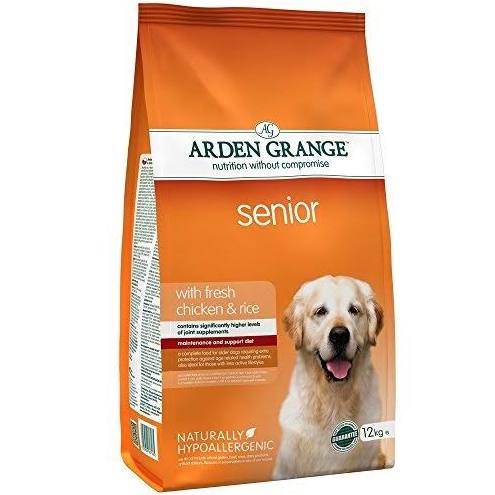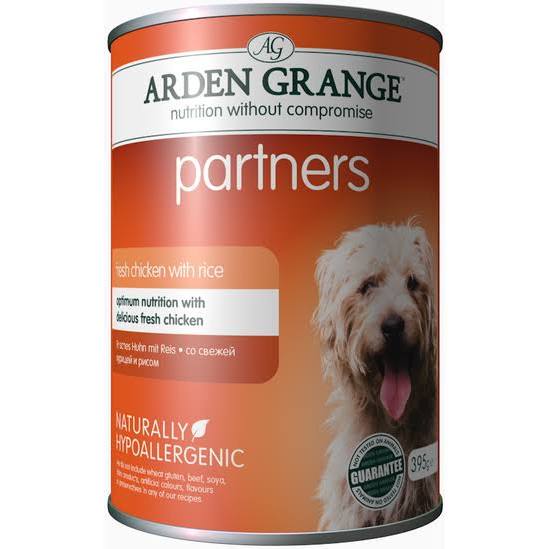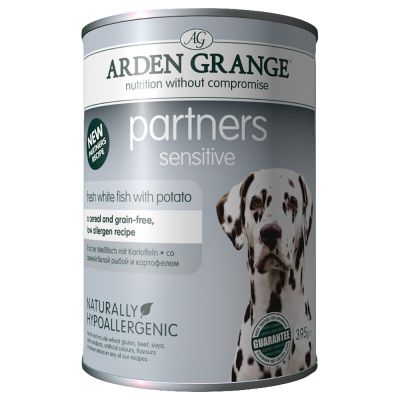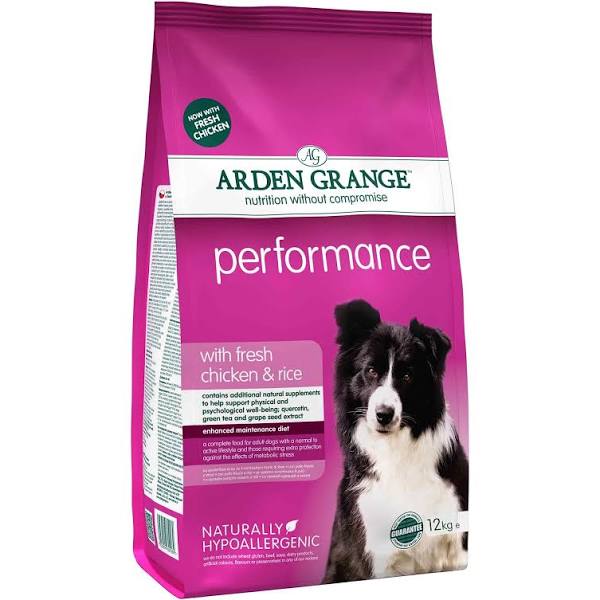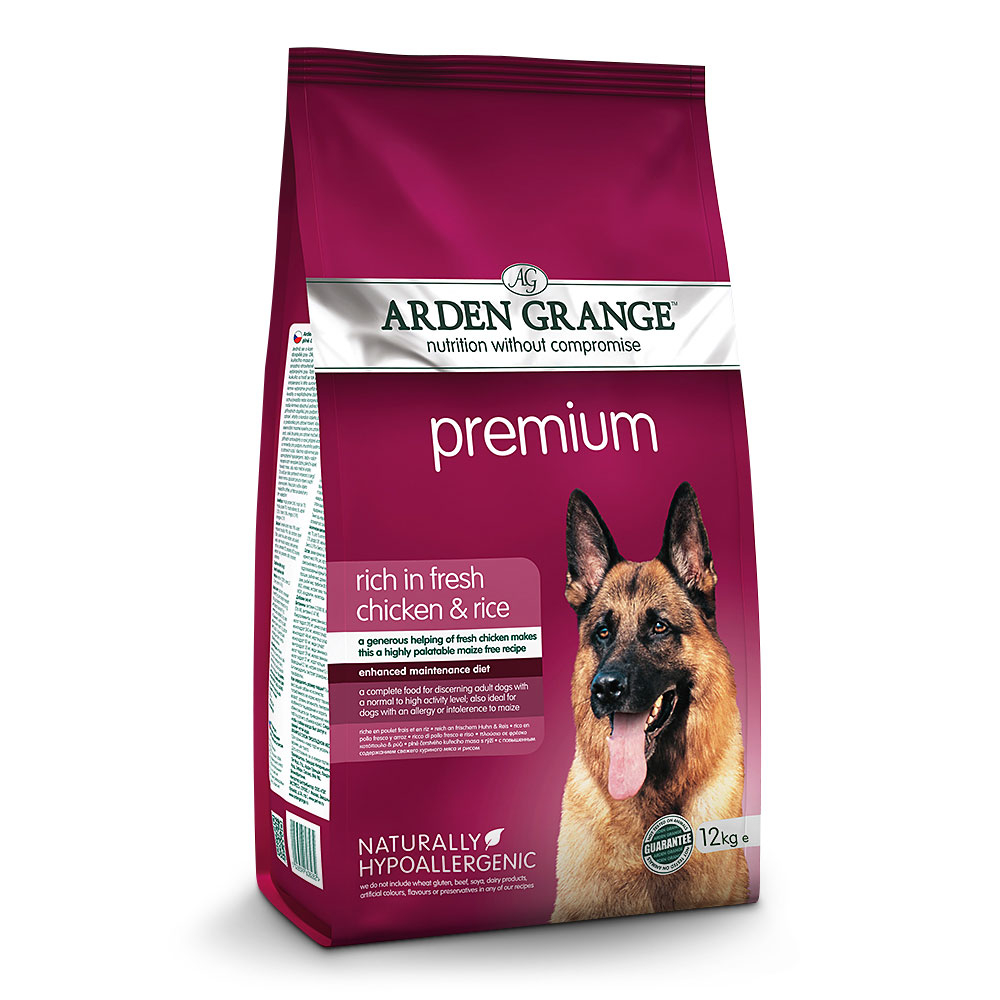Arden Grange Partners Lamb, Rice And Vegetables (Lamb & Rice) Wet Recommended for: Dogs older than 9 months It can also be used for: Dogs that prefer wet food Sick or recovering dogs Dogs with a food allergy or intolerance to chicken proteins Nutritional information: Very tasty and appetizing Lower water content compared to most wet foods on the market Older puppies can be fed along with growth diets (Partners can should not supply more than one third of the daily calories) MORE INFORMATION Analytical components : Moisture 70%, protein 11%, fat 8%, ash 3.5%, fiber 1% Composition : Fresh lamb (70%), Rice (5%), Minerals, Peas, Carrots, beet pulp, fish oil, algae extract, Glucosamine, Chondroitin, blueberries, cassava extract, Yeast Extract (high in nucleotides ). Additives (per kg): Nutritional supplements Vitamins: Vitamin A 4,500 IU, Vitamin D3 656 IU, Vitamin E 52 IU Trace elements: Zinc sulfate monohydrate 133mg, ferrous sulfate monohydrate 83mg, cupric sulfate pentahydrate 19mg, manganese sulfate 12.5mg, anhydrous calcium iodate 1.43mg, selenized sodium 0.18mg feeding instructions If you use Arden Grange Partners together with Arden Grange dry food, follow the instructions on the bag of dry food and reduce 40g for every 120g of wet food fed. Recommended daily feeding table Consult the following table for the recommended daily food ration for your pet. Weight Kgs. Grams / Day 2 5 150 300 5 10 200 400 10 25 400 800 25 50 800 1200 How to use the Feeding Chart The Arden Grange feeding charts provide an estimate of the recommended daily feeding amount based on the weight of your dog or cat. It is important to remember that this is only a guide and that there are multiple factors that must be taken into account when assessing the nutritional needs of your pet. Activity Level Temperament/Character (stressed animals burn more calories than those in a more relaxed state) Metabolism (every animal has its own metabolism, this means that 2 dogs of the same age, breed and weight could have different daily calorie needs) In order to administer the correct rations, it is advisable to examine your pet's appetite, appearance and faeces. Although it is not pleasant to examine the stool, it is the best indicator of health. The increase in the frequency of deposition of faeces or producing a large amount of excrement are usually symptoms that the animal is receiving more food than it needs. It is important to know the exact weight of your dog or cat, and also to weigh the food. Otherwise, we would have a large margin of error.

